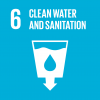About Local Groundwater Balance Model
The development of the LGBM was made by quantifying flows and distribution of groundwater in a local aquifer, with the ultimate goal to influence groundwater literacy. It allows the identification and assessment of the human-induced flows affecting the quality of groundwater resources of an individual local aquifer with more precision, together with the society, while demonstrating that this model can be combined with other assessment methods (such as the groundwater footprint method and regional water balances), and include virtual water calculations.The LGBM could be used to determine the human-induced flows affecting groundwater quality, to monitor water availability and withdrawals, and to promote improved allocations between users. The LGBM could be extended in the following directions: (i) model the flux of hazardous substances within the system under different scenarios, and (ii) incorporate the dynamic nature of decision making into modeling. Monitoring, back-casting and modification of resources with future research data are highly recommended. LGBM specifically supports the following SDG6 Targets 6.3, 6.4, 6.5, and 6.6(a and b) by facilitating examination of hotspots of pollution and distribution of flows of hazardous substances; minimizing release of chemicals; ensuring sustainable withdrawals; revealing water extraction trends and sectors with major consumption; strengthening participation of local communities; and protecting the ecosystem.








